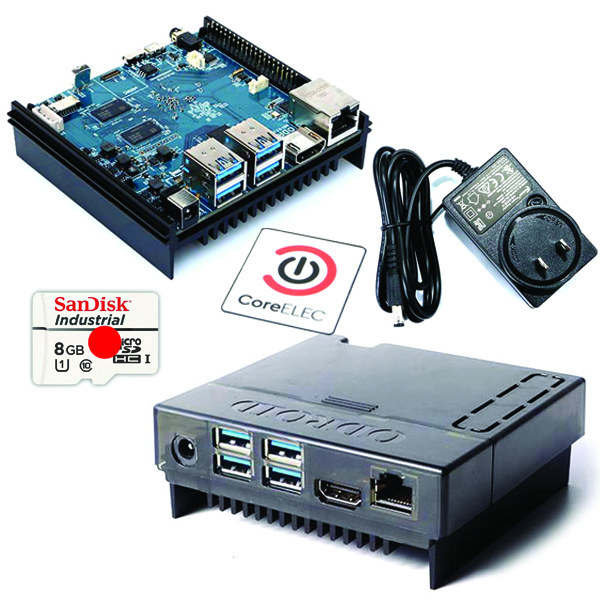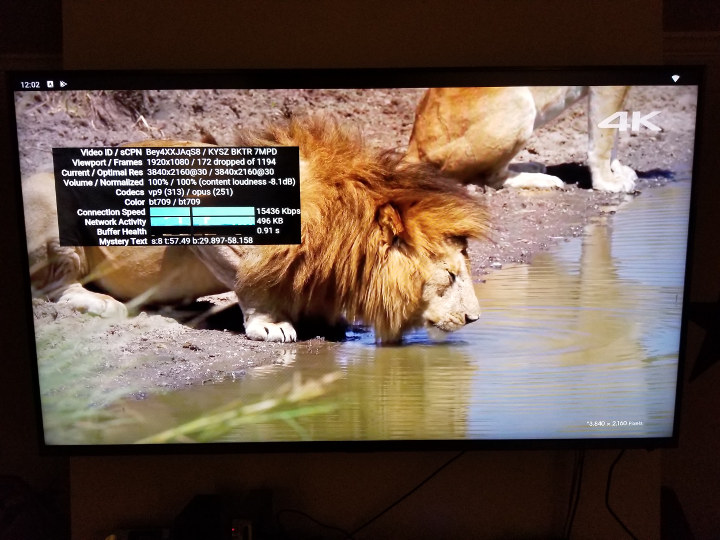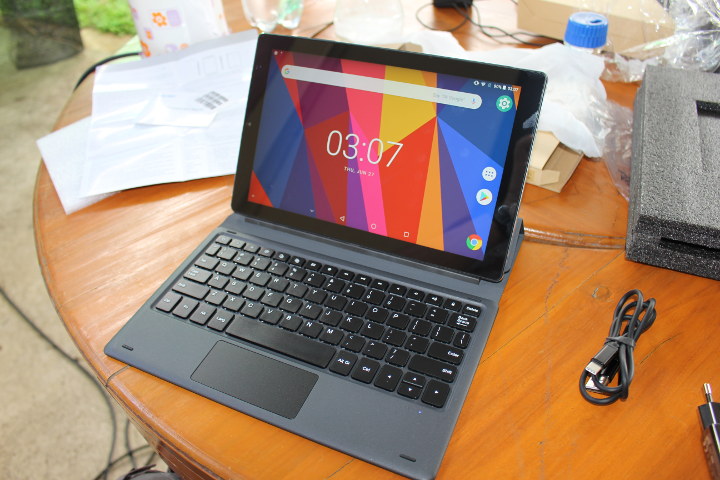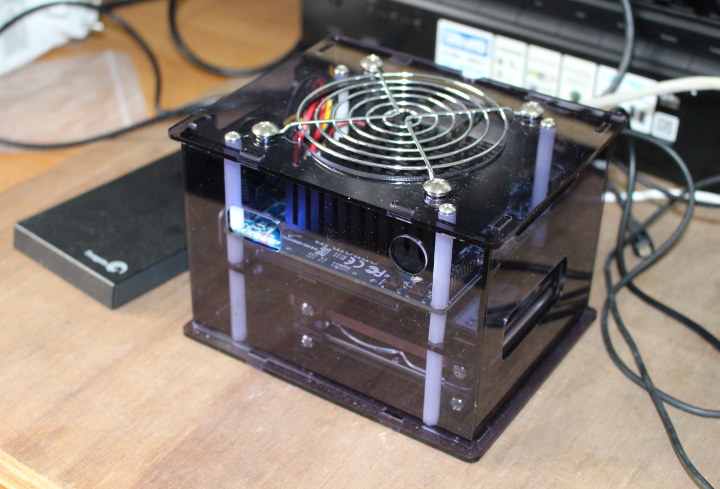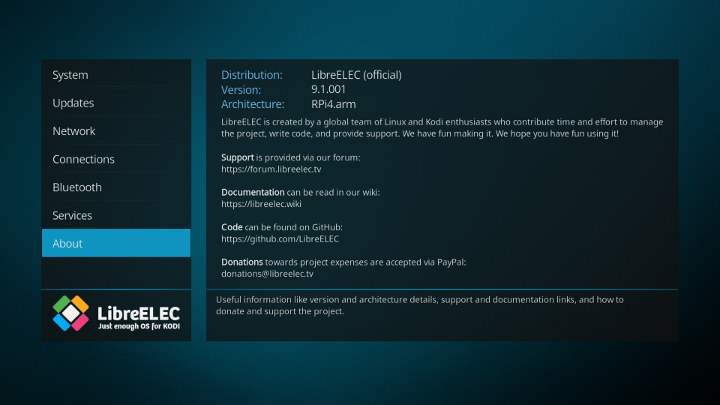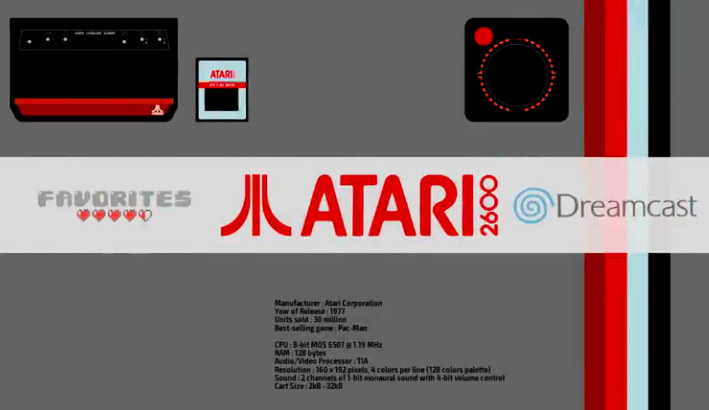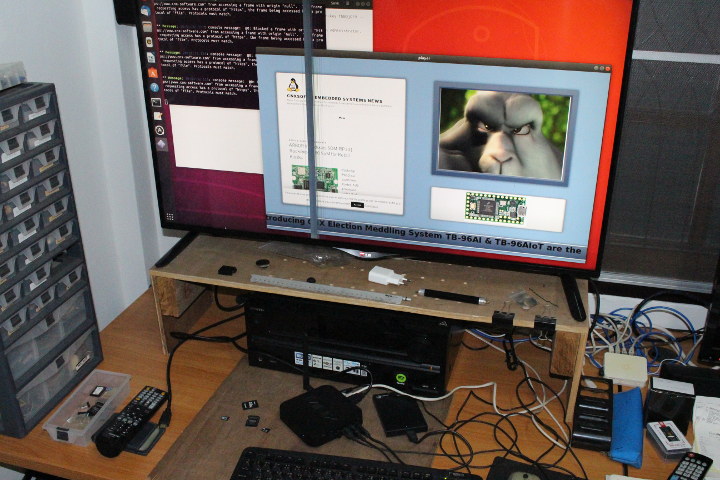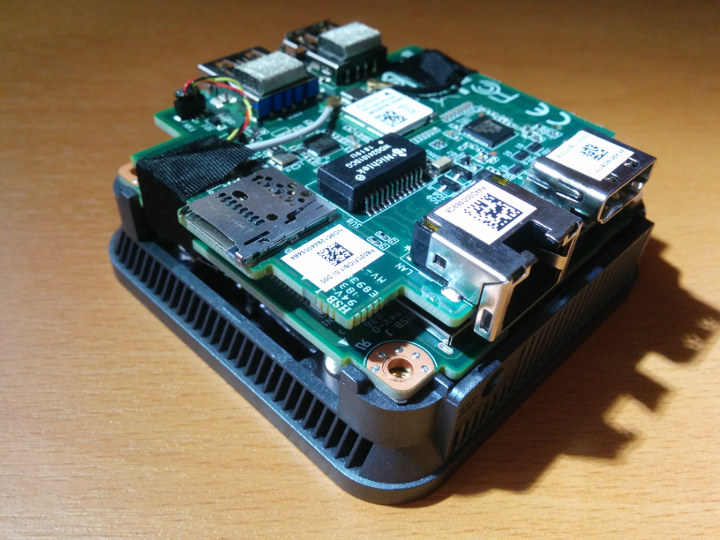ODROID-N2 is an Amlogic S922X single board computer with 2GB or 4GB RAM that’s fairly popular thanks to its great performance/price ratio, good cooling, and decent support from Hardkernel. Hardkernel have worked in collaboration with CoreELEC, and have just introduced ODROID-N2 CoreELEC Edition media center featuring the SBC. The company offers the media center at introductory prices of $65 for the 2GB RAM model, and $75 for the 4GB model with limited stocks at those discounted prices. ODROID-N2 CoreELEC Edition media center includes the following: ODROID-N2 SBC with either 2GB or 4GB RAM ODROID-N2 Case Black An 8GB Industrial MicroSD UHS-1 card pre-loaded with CoreELEC for ODROID-N2 preinstalled 12V/2A Power Supply (with chosen type of plug) CoreELEC Logo Sticker CoreELEC for ODROID-N2 supports 4K HDR10 and HLG high dynamic-range, Auto frame rate switching & dynamic range matching, DTS-HD & Dolby-HD audio pass-through including DTS:X and Dolby Atmos. The firmware is […]
Beelink GT-King (Amlogic S922X) TV Box Review
Rant Karl here. I have been playing around with Android boxes for several years. Unfortunately, some fundamental issues from when I first started playing around with these boxes are still there. They have come a long way since the MK808 with Rockchip RK3066 processor. The MK808 was my first endeavor into Android on the TV in 2013. I can’t believe it’s been nearly 6 years. In 2014 Google introduced Android TV and the Nexus Player. It was designed for a TV and controller. The first boxes/sticks adapted the stock Android experience to run on a TV, but without a touch interface the experience was/is not optimal. Sure you get thousands and thousands of apps but a lot of them don’t work. Unfortunately, this hasn’t changed much. If these boxes came with Linux and Android I don’t think I would complain as much. I would consider it a tinkering box. But […]
Chuwi HiPAD LTE Tablet Review – Part 2: Android 8.0
Last month, I received HiPad LTE tablet, and in the first part of the review I checked out the specifications of the 10″ tablet with a MediaTek Helio X27 deca-core processor, 3GB RAM, 32 GB storage, and had a look at the accessories including the keyboard dock. I’ve now had more time to actually play with the device, so I’ll report my experience with Android 8.0, and the pros and cons of the latest Chuwi tablet. General Impressions My previous tablet was Onda V18 Pro, and Chuwi HiPad LTE is clearly an upgrade thanks to the faster Heliox X27 deca-core processor coupled with 3GB of RAM. The 10.1″ display has a 1920×1200 resolution, not quite as good as the 2560×1600 resolution of the Onda tablet, but I still found the screen to be crispy and sharp. I found the tablet to be great for browsing the web and watching YouTube […]
ODROID-H2 Review – Part 2: Ubuntu 19.04
After many months of delays due to Intel not mass-producing Gemini Lake processors, Hardkernel started selling ODROID-H2 again, more exactly ODROID-H2 Rev. B, and the end of last month, and the company sent me a full kit for evaluation. You can check out ODROID-H Rev. B with Type 3 case and the assembly instructions in the first part of the review. I’ve now had time to play with the board using the pre-installed Ubuntu 19.04 operating systems so I’ll report my experience in this second part. Note that ODROID-H2 does not rely on a custom version of Ubuntu, and instead you can download and flash Ubuntu 18.04 or 19.04 ISO directly from Ubuntu website. First Boot and System Information I had already connected two SATA drives inside the enclosure, one SSD and one HDD, but before booting the device I connected an HDMI cable, one Ethernet cable, USB keyboard & […]
4K Video Playback on Raspberry Pi 4 with LibreELEC (Alpha)
In my short Raspberry Pi 4 review, I tested 4K video output and playback in Raspbian, and sadly neither are working properly, with video output stuck to 1080p60 even after selecting 4K HDMI in the settings and yes, I double checked for “hdmi_enable_4k=1” in config.txt, while H.265 video playback is still clearly using software decode in both VLC and omxplayer. However, LibreELEC team announced support for Raspberry Pi 4 in LibreELEC 9.2 Alpha1 release based on Kodi 18.3 and Linux 4.19.x. So I downloaded LibreELEC-RPi4.arm-9.1.001.img.gz and flash it to a microSD card with balenaEtcher. The good news is that I could manually set the resolution to 3840×2160 and confirm it works with my TV, but the refresh is limited to 30 Hz maximum. Other refresh rates currently available include 23.98 Hz, 24 Hz, 25 Hz, and 29.97 Hz. The hardware is capable if 4K 60Hz, so it’s just a question […]
Batocera.Linux OS Combines Kodi & Retro Gaming for Raspberry Pi & ODROID Boards
There are already several ways to run retro games on development boards, with for example RetroPie, and derivatives like RetrOrangePi, Lakka and Recalbox. Batocera.Linux is another option that I had never heard about so far, and works on PCs, as well as Raspberry Pi and ODROID boards, with ODROID-N2 support having been added very recently. batocera.linux operating system can easily be run from a USB flash drive on your computer without altering your existing OS, while it will boot from a standard microSD card on Raspberry Pi and ODROID boards. Beside retro-gaming support, the OS also includes Kodi media center for playing videos, or listening to music. You may even play games in it since retro-gaming support was added in Kodi 18. The partial compatibility table above shows all platforms have a different level of support, and for Intel hardware support more emulators than Arm based boards. The Orange arrow […]
MINIX NEO Z83-4U Review – Ubuntu 18.04, Kodi 18, and Xibo Digital Signage
MINIX NEO Z83-4U is a Cherry Trail mini PC pre-loaded with Ubuntu 18.04. I received a sample a little while ago, and in the first part of NEO Z83-4U review I checked out the specifications and hardware that appears to be exactly the same a MINIX NEO Z83-4 Pro mini PC, except for the eMMC flash capacity that has increased from 32GB to 64GB. Since the mini PC comes with an older Atom X5-Z8350 processor, and is designed for commercial applications, I’ve decided to make a slightly different review. We already now how the system is supposed to perform thanks to benchmarks with NEO Z83-4 mini PC running Windows 10 Pro, so I’ll just check the main features are working as expected in Ubuntu 18.04, test audio & video support in Kodi 18.1, and try out Xibo Linux open source digital signage CMS and player on the mini PC. MINIX […]
LIVA Q2 Review – ECS Micro PC Tested with Windows 10 and Ubuntu 18.10
ECS (Elitegroup Computer Systems) is a Taiwanese company that has been offering mini PCs for several years now. Last year they announced their ‘pocket-sized’ model the LIVA Q. Originally featuring Apollo Lake SoCs it has now been upgraded and renamed as the LIVA Q2 and offers a choice of Gemini Lake SoCs. The distinguishing feature of the LIVA Q series however is the form-factor. Compared with Intel Compute ‘stick’ PCs and Intel NUC ‘mini’ PCs the LIVA Q2 is a ‘micro’ PC. This micro PC is like a minimalist mini PC that includes just the minimum number of useful ports namely a couple of USB ports (3.1 and 2.0) on one side, a micro SD card slot on another and finally an HDMI (2.0) and gigabit Ethernet at the rear. The resultant micro PC is beautifully small consisting of a 70mm (2.76″) square case by 33.4mm (1.31”) tall which can […]


